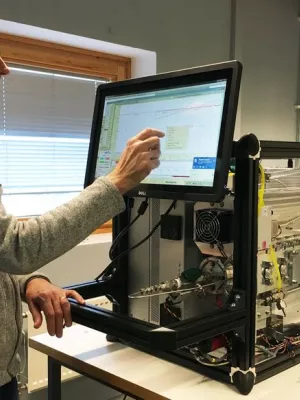
Erik Swietlicki
Professor

Novel insights on new particle formation derived from a pan-european observing system
Author
Summary, in English
The formation of new atmospheric particles involves an initial step forming stable clusters less than a nanometre in size (<~1 nm), followed by growth into quasi-stable aerosol particles a few nanometres (~1-10 nm) and larger (>~10 nm). Although at times, the same species can be responsible for both processes, it is thought that more generally each step comprises differing chemical contributors. Here, we present a novel analysis of measurements from a unique multi-station ground-based observing system which reveals new insights into continental-scale patterns associated with new particle formation. Statistical cluster analysis of this unique 2-year multi-station dataset comprising size distribution and chemical composition reveals that across Europe, there are different major seasonal trends depending on geographical location, concomitant with diversity in nucleating species while it seems that the growth phase is dominated by organic aerosol formation. The diversity and seasonality of these events requires an advanced observing system to elucidate the key processes and species driving particle formation, along with detecting continental scale changes in aerosol formation into the future.
Department/s
- Ergonomics and Aerosol Technology
- Nuclear physics
- MERGE: ModElling the Regional and Global Earth system
Publishing year
2018-12-01
Language
English
Publication/Series
Scientific Reports
Volume
8
Issue
1
Document type
Journal article
Publisher
Nature Publishing Group
Topic
- Meteorology and Atmospheric Sciences
Status
Published
ISBN/ISSN/Other
- ISSN: 2045-2322